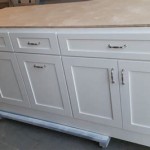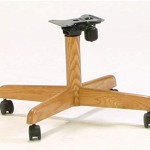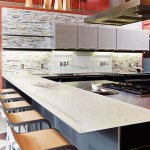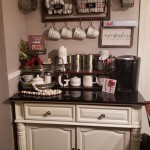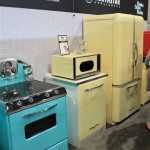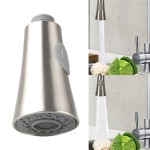Nostalgic Kitchen Accessories: A Look at Classic Items
The kitchen, often considered the heart of the home, is a space deeply intertwined with memories and traditions. Beyond its functional purpose, it serves as a repository of shared experiences, often evoked by the presence of familiar objects. These objects, particularly kitchen accessories from bygone eras, possess a unique ability to transport individuals back to simpler times, stirring feelings of warmth and nostalgia. This article will explore several classic kitchen accessories, examining their design, functionality, and the nostalgic value they hold for many.
The appeal of these vintage items stems from a confluence of factors. They represent a perceived simpler era, often associated with home-cooked meals, family gatherings, and a slower pace of life. Moreover, the aesthetic of many of these accessories, characterized by durable materials, distinctive designs, and vibrant colors, contrasts sharply with the often minimalist and mass-produced items found in contemporary kitchens. The resurgence of interest in vintage kitchenware reflects a desire to connect with the past and infuse personal spaces with a touch of history and character.
The Enduring Appeal of Pyrex
Pyrex, the brand synonymous with durable and oven-safe glassware, holds a special place in the hearts of many home cooks. Introduced in 1915 by Corning Glass Works, Pyrex revolutionized baking and cooking, offering a transparent and heat-resistant alternative to traditional metal cookware. Its initial success stemmed from its practical advantages: consumers could easily monitor the progress of their dishes while baking, and the glass material was resistant to stains and odors.
Beyond its functional benefits, Pyrex's appeal lies in its iconic designs. From the simple, clear glass baking dishes to the vibrant, patterned mixing bowls, Pyrex pieces became fixtures in mid-century kitchens. The "Primary Colors" mixing bowl set, with its distinctive red, yellow, blue, and green hues, is perhaps one of the most recognizable and highly sought-after vintage Pyrex items. The company frequently introduced new patterns and color schemes, reflecting the design trends of each decade. These designs, often featuring floral motifs, geometric shapes, or whimsical illustrations, contribute to the nostalgic value of Pyrex for many collectors and users.
The durability of vintage Pyrex is another key factor in its enduring appeal. Many pieces have survived decades of use, testament to the quality of the materials and craftsmanship. Owning and using vintage Pyrex allows individuals to connect with a sense of history and tradition, recreating recipes and meals passed down through generations. However, it is crucial to note that the composition of Pyrex glass has changed over the years. Vintage Pyrex is made from borosilicate glass, which is more resistant to thermal shock than the soda-lime glass used in modern Pyrex products. Thus, when using vintage Pyrex, it is advisable to avoid extreme temperature changes to prevent breakage.
The Charm of Hand Cranked Kitchen Tools
Before the advent of electric kitchen appliances, hand-operated tools were essential for preparing meals. These tools, often crafted from cast iron, wood, and enamel, represent a time when cooking was a more labor-intensive and deliberate process. Today, these items are valued not only for their functionality but also for their aesthetic appeal and connection to a bygone era.
Examples of popular hand-cranked kitchen tools include food mills, coffee grinders, and ice cream makers. Food mills were used to puree fruits and vegetables, creating smooth sauces, jams, and baby food. These mills typically consisted of a hopper, a grinding plate, and a hand crank. Coffee grinders were essential for freshly grinding coffee beans, a practice that was considered crucial for achieving optimal flavor. These grinders came in various forms, from small tabletop models to larger, wall-mounted versions. Ice cream makers relied on a combination of ice, salt, and manual churning to create frozen desserts. These machines often involved significant physical effort, making the resulting ice cream a truly rewarding treat.
The design of these hand-cranked tools often reflects a focus on functionality and durability. Cast iron, with its robust nature, was a common material choice. Wooden handles and knobs provided a comfortable grip, while enamel finishes added a touch of color and protection against corrosion. The simple mechanics of these tools made them relatively easy to repair and maintain, contributing to their longevity. The act of using these tools, requiring physical effort and precise control, can be seen as a form of mindful engagement with the cooking process, a stark contrast to the speed and convenience of modern appliances.
The Nostalgia of Vintage Kitchen Scales
Kitchen scales, both mechanical and spring-based, were indispensable tools for accurate measurement in cooking and baking. While digital scales have become ubiquitous in modern kitchens, vintage scales possess a distinct charm and aesthetic that resonates with many. These scales, often featuring enameled metal bodies, ornate details, and clearly marked measurements, served as functional tools and decorative objects.
Early kitchen scales often utilized a balance beam design, with weights added to one side to counterbalance the ingredients placed on the other. These scales were known for their accuracy and reliability, but they required a degree of skill and patience to operate. Spring-based scales, which became more common in the early 20th century, were easier to use, employing a spring mechanism to measure the weight of ingredients. These scales typically featured a dial or gauge that displayed the weight in pounds, ounces, or grams.
The aesthetic appeal of vintage kitchen scales lies in their distinctive design and the quality of the materials used. Enameled metal bodies, often in vibrant colors like red, cream, or green, added a touch of visual interest to the kitchen. Ornate details, such as decorative feet, embossed lettering, and gracefully curved arms, further enhanced their aesthetic appeal. Owning and using a vintage kitchen scale can evoke a sense of nostalgia for a time when accuracy and craftsmanship were highly valued. Furthermore, the presence of such a scale can serve as a decorative element, adding a touch of vintage charm and character to the kitchen.
Beyond these examples, numerous other vintage kitchen accessories evoke nostalgia, including rolling pins, cookie cutters, enamelware pots and pans, and even vintage linens. Each item carries its own story and contributes to the overall atmosphere of a bygone era. The act of collecting, restoring, and using these items is a way to preserve history, honor tradition, and create a kitchen that reflects personal style and cherished memories.
:strip_icc()/CTH636097-676a69079ac44957a94399dbce28eb8b.jpg?strip=all)
18 Vintage Kitchen Ideas That Radiate Timeless Style
:strip_icc()/102155453-88c7ab87137e41ef95e2b3bd6ef3d674.jpg?strip=all)
18 Vintage Kitchen Ideas That Radiate Timeless Style
:strip_icc()/101660508-85acdbf4c4b1445a907e44a3890615ed.jpg?strip=all)
18 Vintage Kitchen Ideas That Radiate Timeless Style
:strip_icc()/102313139-8630f532c3a04f56916e4aa52d3fb2e5.jpg?strip=all)
18 Vintage Kitchen Ideas That Radiate Timeless Style
:strip_icc()/102283214-59d8a38b2958434f8dd0e5d90c80b942.jpg?strip=all)
18 Vintage Kitchen Ideas That Radiate Timeless Style
:strip_icc()/102147763-42dee54fa9764bc6ac95c8abaa48b8bd.jpg?strip=all)
18 Vintage Kitchen Ideas That Radiate Timeless Style

Vintage Kitchen Decor Ideas Domino

12 Retro Diner Decor Ideas For Your Kitchen Vintage

Vintage Kitchen Decor Ideas Domino

Vintage Kitchen Decor Ideas Domino
Related Posts

